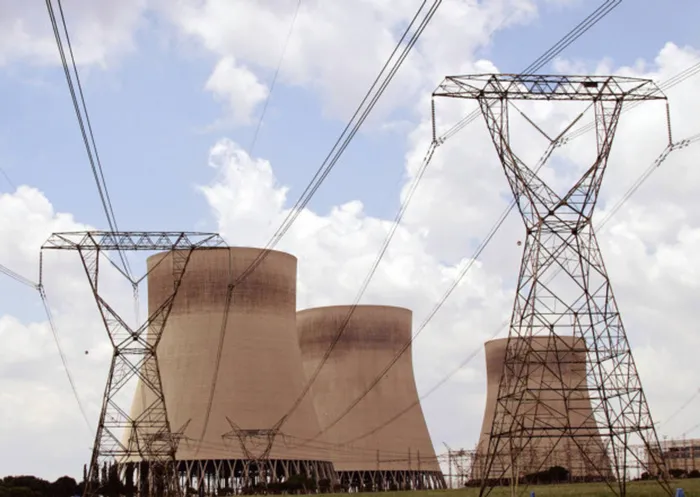Eskom's outlook brighter

Electricity power lines and cooling towers are seen at Eskom Holdings Ltd.'s Kendal coal-fired power station in Delmas, South Africa, on Monday, Dec. 6, 2010. In the next decade, Eskom will add 10,000 megawatts of generation capacity by starting production from the Medupi and Kusile coal-fired plants and the Ingula Pumped Storage hydropower facility. Photographer: Nadine Hutton/Bloomberg Electricity power lines and cooling towers are seen at Eskom Holdings Ltd.'s Kendal coal-fired power station in Delmas, South Africa, on Monday, Dec. 6, 2010. In the next decade, Eskom will add 10,000 megawatts of generation capacity by starting production from the Medupi and Kusile coal-fired plants and the Ingula Pumped Storage hydropower facility. Photographer: Nadine Hutton/Bloomberg
Johannesburg - Eskom sold a fraction less electricity than a year ago, made 11 percent more money from it and massively increased its profits.
The entity produced less of its own electricity year-on-year, used its prohibitively expensive diesel generators even more than the year before (but spent less on the diesel for this), and also bought much more from independent power producers (IPPs).
This mix changed during the year from heavy use of the diesel-fired open-cycle gas turbines (OCGTs) in the first half of the year to more IPP use. In the first half of the financial year, Eskom had logged 75 percent of its full year’s use of OCGTs but only 44 percent of the IPPs. Despite the reduction in OCGT use, Eskom spent a little more on primary energy costs (coal and diesel to run the power stations) in the first half of the year than in the second.
A key factor in financial recovery was that Eskom improved its own efficiency, costing 4 percent less per GWh produced to run its own power plants than a year ago, but the cost of buying power from IPPs went up 6 percent per GWh.
This is all in Eskom’s integrated annual report for the financial year ended March 2016, which was released on Tuesday.
Eskom’s report identified three key reasons for improved performance.
“There was a significant improvement in the performance of the business that was achieved through the stabilisation of executive management, generation plant performance (and) liquidity position,” said the report.
The improved generation performance is illustrated both by the reduction in use of the OCGTs and the improved energy availability factor (EAF), which measures the percentage of the grid actually usable.
This improved from an overall EAF of 68 percent in April 2015 (with 16 percent of the total capacity off-line due to breakdowns and the rest due to planned maintenance) to 74 percent in March this year (with breakdowns down to 12 percent).
A big help to Eskom’s liquidity were the two government handouts during 2015. These were the government’s R23 billion bailout plus the government’s change of an old R60bn loan to a bailout (Eskom hadn’t yet had to make any payments on the loan).
These are the numbers:
Eskom sold 214 487GWh of electricity in 2015/16 (down from 216 274GWh in 2014/15).
That brought in R163.4bn (R147.7bn in 2015).
Profits after tax soared to R4.6bn (from just R200 million in 2015).
Eskom itself generated 229 012GWh of electricity (232 322GWh in 2015).
It bought a little less from neighbouring states than the year before, but bought 9 033GWh from IPPs, which was 50 percent more than the 6 022GWh the year before.
Eskom used its OCGT generators to produce 3 936GWh (up from the 3 709GWh of 2015) at a cost of R8.7bn on diesel (less than the R9.5bn of 2015).
Eskom’s own generation, using its baseload coal stations, are the cheapest electricity.
Eskom’s baseload costs about R262 000 per GWh to produce.
IPPs are more than six times the price, at R1.7m/GWh.
Eskom’s OCGTs are still the most expensive, as at R2.2m they are more than eight times the cost of baseload stations.